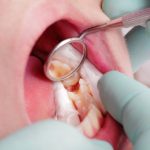
Currently endodontically treated teeth are being treated with adhesive rather than non-adhesive restorations. However, endodontically treated posterior teeth are thought to be more likely to complications leading to loss of restorations on the tooth.
The aim of this review was to compare direct and indirect restoration of endodontically treated posterior teeth.
Methods
Searches were conducted in the Medline/PubMed, CENTRAL and Embase databases for randomised, prospective, and retrospective clinical trials comparing both direct composite resin and indirect restorations, published since 2000. Studies published in English, German or Dutch were considered. Two reviewers independently screened and selected studies and extracted data. Randomised controlled trials (RCTs) were assessed using the Cochrane Risk of Bias tool (ROB-2) with prospective and retrospective cohort studies being evaluated with the ROBINS-I tool. The main outcomes were tooth and restoration survival with meta-analysis being conducted for tooth retention and restorative success.
Results
- 22 studies (2 RCTs, 3 prospective, 17 retrospective).
- 13 studies had a short-term follow up of 2-5 years, and 9 medium-term (7.3 – 11 yrs).
- 5 studies used insurance or national dental database data, 14 data from a university setting and 3 from private practice.
- None of the included studies was at low risk of bias, both RCTs were considered to have some concerns while 9 of the 20 pro- and retrospective studies were considered to have critical risks and 11 to have serious concerns.
- Meta-analysis (2 RCTs) showed no significant difference in the odds for: –
- tooth retention at 3 years, OR =2 .06 (95%CI: 0.08 to 53.52).
- restorative failure at 3 years, OR = 2.31 (95%CI: 0.59 to 9.0).
Conclusions
The authors concluded: –
For the short term (2.5 to 3 years), low-quality evidence suggests no difference in tooth survival or restoration quality. To assess the influence of the type of restoration on the survival and restorative success of endodontically treated posterior teeth, clinical trials that control for the amount of coronal tooth tissue and other baseline characteristics are needed.
Comments
The authors have searched 3 major databases for this review although the language restrictions may have excluded some relevant studies. While 22 studies have been included the majority (17) are retrospective and a more likely to bias. None of the included studies were assessed as being at low risk of bias with all 20 of the studies being considered as being at critical or serious risk of bias. The two RCTs contributed to meta-analyses for tooth retention and restoration failure at 3 years. While these showed no difference between direct and indirect restorations the studies are small as is the number of events (retention/failure). In addition, neither RCTs was considered to be at low risk of bias so grading the available evidence as low as indicated by the authors seems generous and very low would be more appropriate. While additional high quality well-designed and reported studies would be helpful a greater consensus of key reporting elements ( eg coronal destruction , tooth prognosis type of restoration, post use etc) and outcomes measure would be beneficial
Links
Primary Paper
de Kuijper MCFM, Cune MS, Özcan M, Gresnigt MMM. Clinical performance of direct composite resin versus indirect restorations on endodontically treated posterior teeth: A systematic review and meta-analysis. J Prosthet Dent. 2021 Dec 31:S0022-3913(21)00634-X. doi: 10.1016/j.prosdent.2021.11.009. Epub ahead of print. PMID: 34980474.
Other references
Dental Elf – 21st Sep 2016
Dental Elf – 28th Sep 2015
